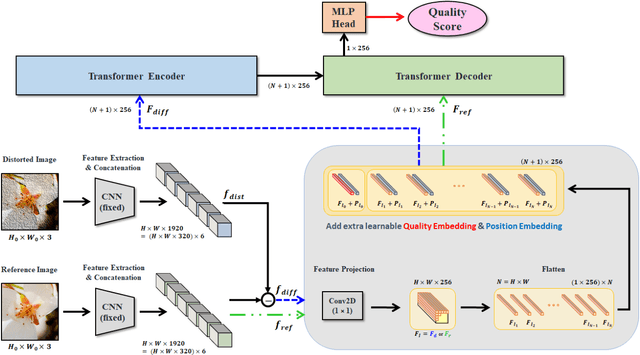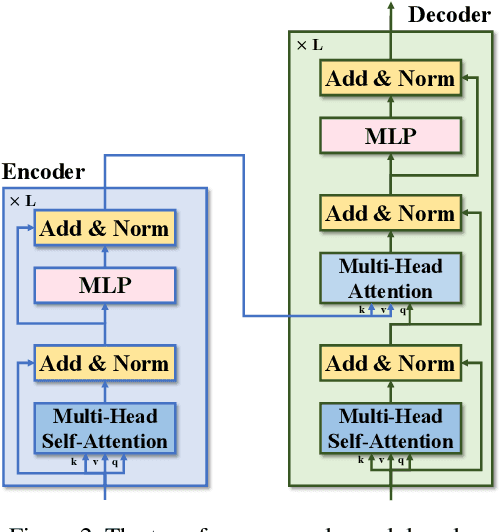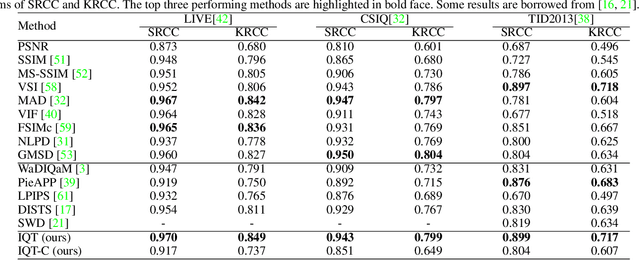Sung-Jun Yoon
Perceptual Image Quality Assessment with Transformers
May 05, 2021



Abstract:In this paper, we propose an image quality transformer (IQT) that successfully applies a transformer architecture to a perceptual full-reference image quality assessment (IQA) task. Perceptual representation becomes more important in image quality assessment. In this context, we extract the perceptual feature representations from each of input images using a convolutional neural network (CNN) backbone. The extracted feature maps are fed into the transformer encoder and decoder in order to compare a reference and distorted images. Following an approach of the transformer-based vision models, we use extra learnable quality embedding and position embedding. The output of the transformer is passed to a prediction head in order to predict a final quality score. The experimental results show that our proposed model has an outstanding performance for the standard IQA datasets. For a large-scale IQA dataset containing output images of generative model, our model also shows the promising results. The proposed IQT was ranked first among 13 participants in the NTIRE 2021 perceptual image quality assessment challenge. Our work will be an opportunity to further expand the approach for the perceptual IQA task.
NTIRE 2020 Challenge on Image Demoireing: Methods and Results
May 06, 2020



Abstract:This paper reviews the Challenge on Image Demoireing that was part of the New Trends in Image Restoration and Enhancement (NTIRE) workshop, held in conjunction with CVPR 2020. Demoireing is a difficult task of removing moire patterns from an image to reveal an underlying clean image. The challenge was divided into two tracks. Track 1 targeted the single image demoireing problem, which seeks to remove moire patterns from a single image. Track 2 focused on the burst demoireing problem, where a set of degraded moire images of the same scene were provided as input, with the goal of producing a single demoired image as output. The methods were ranked in terms of their fidelity, measured using the peak signal-to-noise ratio (PSNR) between the ground truth clean images and the restored images produced by the participants' methods. The tracks had 142 and 99 registered participants, respectively, with a total of 14 and 6 submissions in the final testing stage. The entries span the current state-of-the-art in image and burst image demoireing problems.
 Add to Chrome
Add to Chrome Add to Firefox
Add to Firefox Add to Edge
Add to Edge